Hanging a hammock is incredibly simple. Yet, most of the hammocks I see when camping are hung incorrectly. Some of the hang methods are insecure. I don’t really care if a camper ends up falling out of the hammock. However, I do care when bad campers use methods which damage trees.
The tree bark ends up with cuts in it. Not only is this ugly, but it increases the chance of fungus or pests getting into the tree and causing an infection. Please don’t be one of these bad campers!
Here I’ll go over instructions for hanging a hammock with straps and with rope, with pictures of how it should look.
Infographic
Wants this info (and more) in PRINTABLE format? Get my
Camping Cheat Sheets: An Illustrated Manual
Hang Hammock Using Straps
It’s best to use hammock straps because they are wide and flat, so won’t dig into bark and damage the tree. Ones made for hammocks usually have lots of loops on them where you can attach your hammock with a carabiner. This makes it easier to adjust the tension and height of your hammock.
Step 1: Attaching the Strap to the Tree
A lot of people make the mistake of circling both sides of the strap around the tree and attaching their carabiner to two loops. This is incorrect: it will cause the strap to rotate around the tree, causing damage. Rather, you should slip one end of the strap through a loop around the tree. The strap won’t move on the tree; only the loose end of the strap will pivot.
Shown above: Eno brand hammock straps. They are available at REI and Amazon.
Step 2: Attaching Your Hammock to the Strap
With a Carabiner: If you are using a strap, the easiest way to attach your hammock to it is a carabiner. Just clip it on and you are ready to go. Make sure the carabiner is actually rated for heavy loads though and not just one of those keychain carabiners.
With a Toggle: If your strap doesn’t have attachment loops, then use a toggle to attach your hammock. The toggle can be any sturdy piece of wood or metal. Use a clove hitch or other hitch (the marlinspike hitch was used in the picture below) to attach the free strap end to the toggle. Then slip your hammock loop over the toggle.
Hang Hammock with Rope
Rope isn’t as good as straps for hanging hammocks because it can dig into tree bark and cause damage. If you absolutely must use rope, them make sure it is thick. Never use wire or thin cord to hang a hammock!
Step 1: Attach Rope to Tree
Start by tying a loop in one end of your rope. A bowline knot is recommended since it is very secure. Wrap the looped end around the tree and put the other end through the loop.
Step 2: Attaching Your Hammock to the Rope
You will have a free end of rope hanging down from the tree. You’ll need to tie this directly to your hammock with a secure knot.
There are several different knots you can use but the sheet bend or slipped sheet bend are easiest. The becket hitch knot is another good option. I’ve used a tautline hitch before (the same knot I use for my tent guylines) but it tends to jam and is hard to untie.
Alternative Method with Rope
Alternatively, you can use the method shown below to hang the hammock with rope. This method will give you two hanging ends of rope. You can tie them into a knot to create an attachment point for a carabiner. A simple overhand knot works well enough but isn’t as secure as a figure 8 in bight knot.
While this method is simple, it’s not as good as the rope method above. The rope can loosen around the tree, causing it move around and damage the bark.
INCORRECT Methods
The following two images are INCORRECT ways to hang a hammock with rope. The first picture is particularly bad. The rope will slide around the tree trunk as the hammock rocks, causing abrasion. The method in the second picture is slightly better but the rope will bang into the tree. Also, that hang method limits your hammock’s rocking and makes it almost impossible to adjust the tension.
Pro Tip: Protect Tree from Damage
In the picture below, you can see how some smart campers put pieces of cardboard around the tree underneath their hang rope. This protects the tree from abrasion. Good job!
“Think Outside photo contest First Landin” (CC BY 2.0) by vastateparksstaff,
“Marlinspike Hitch and DIY Toggle” (CC BY-SA 2.0) by JCHaywire


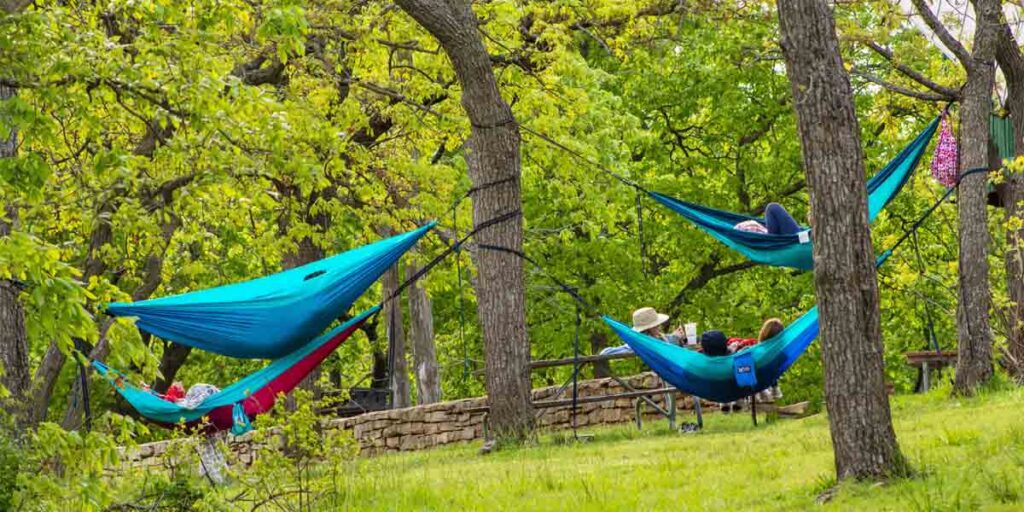
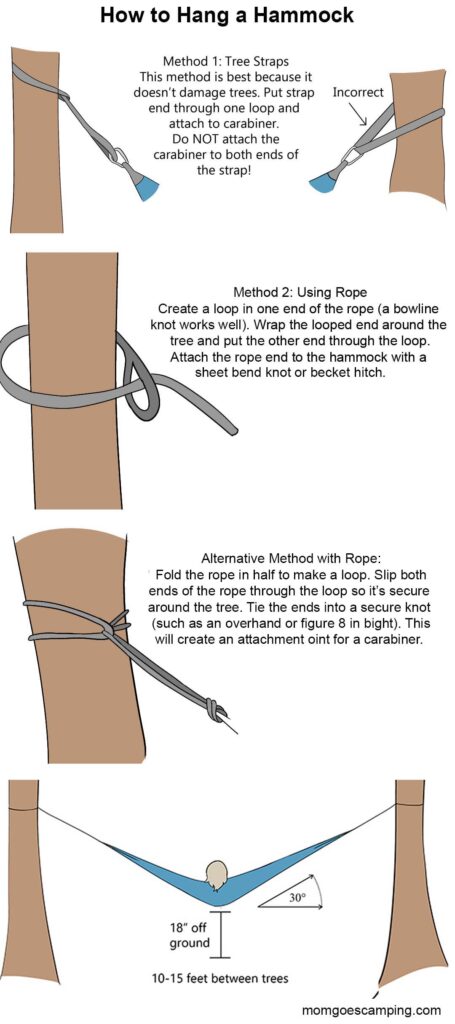
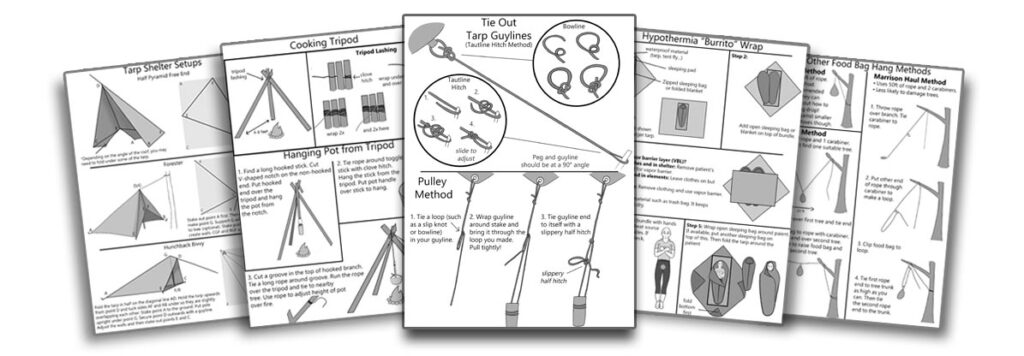
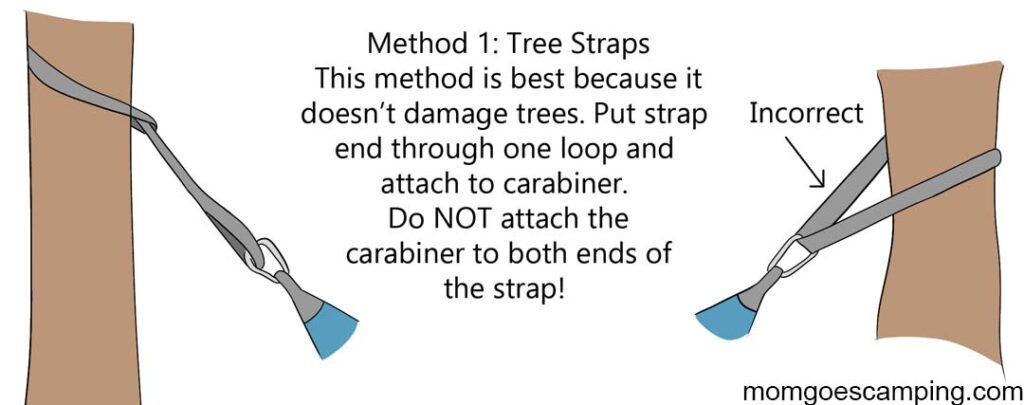
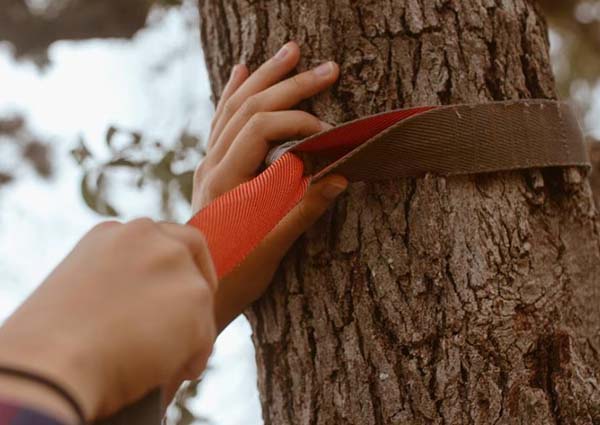

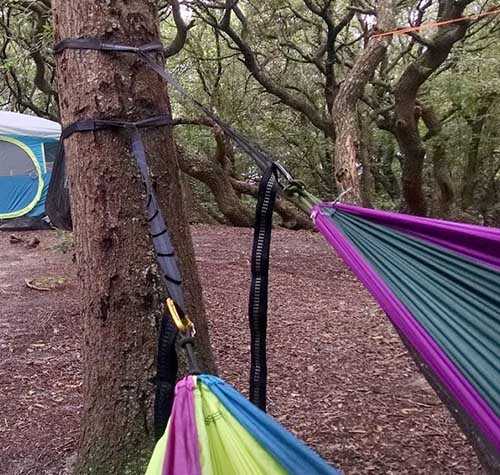
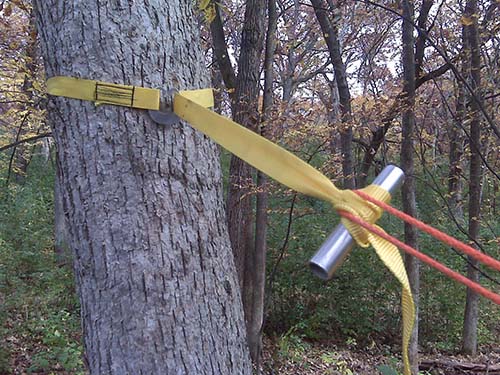
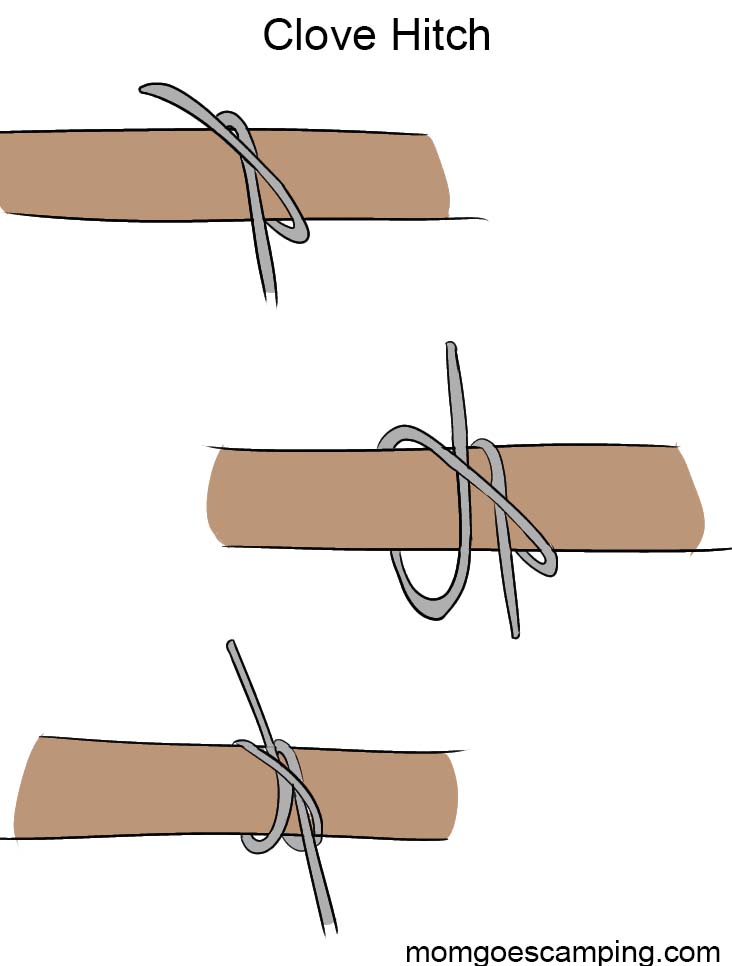
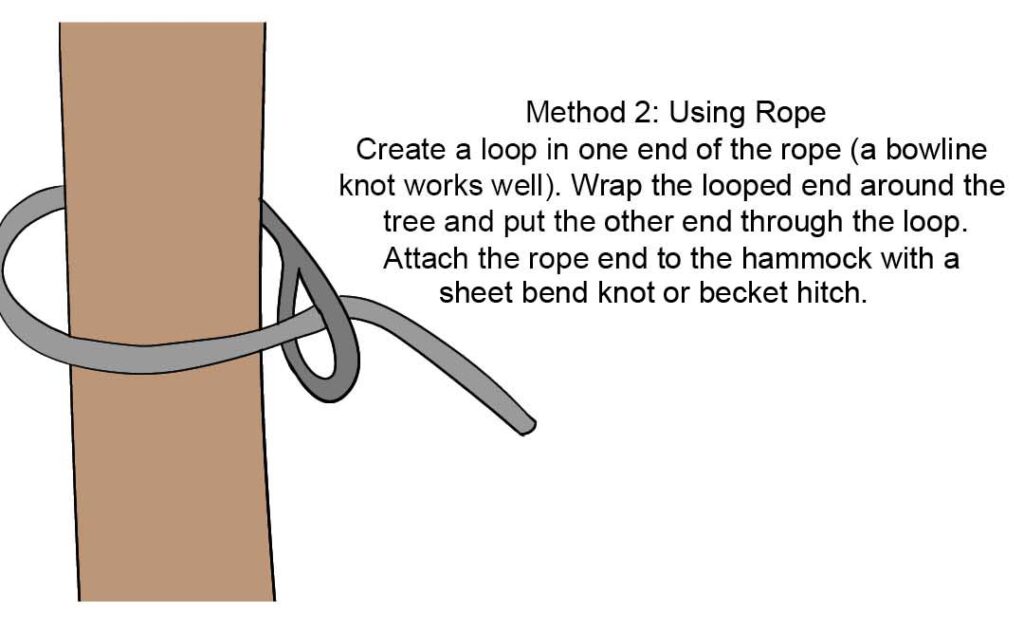
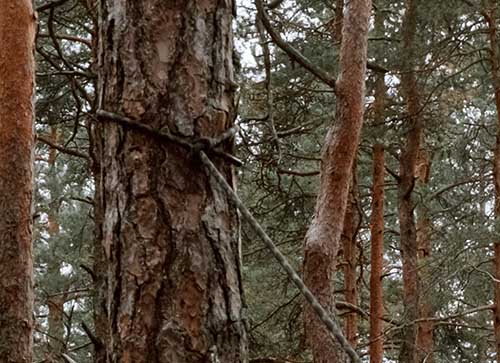
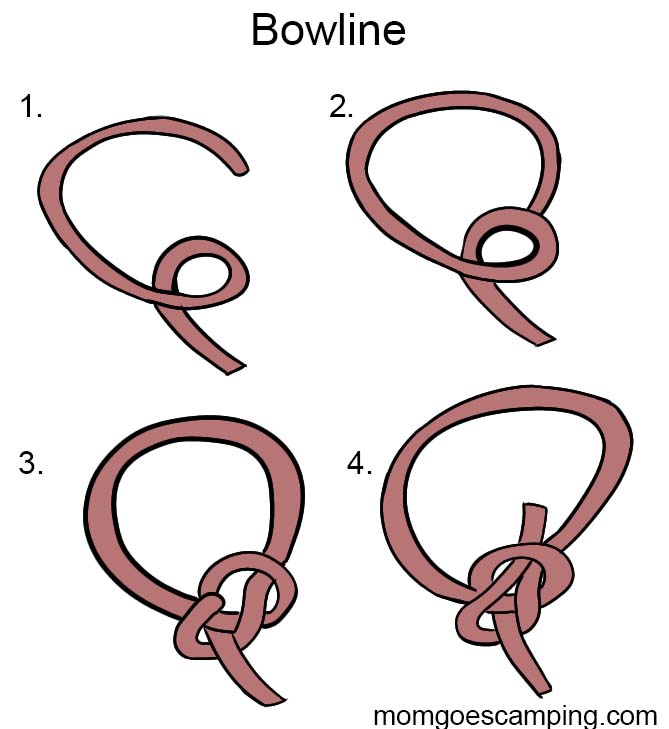
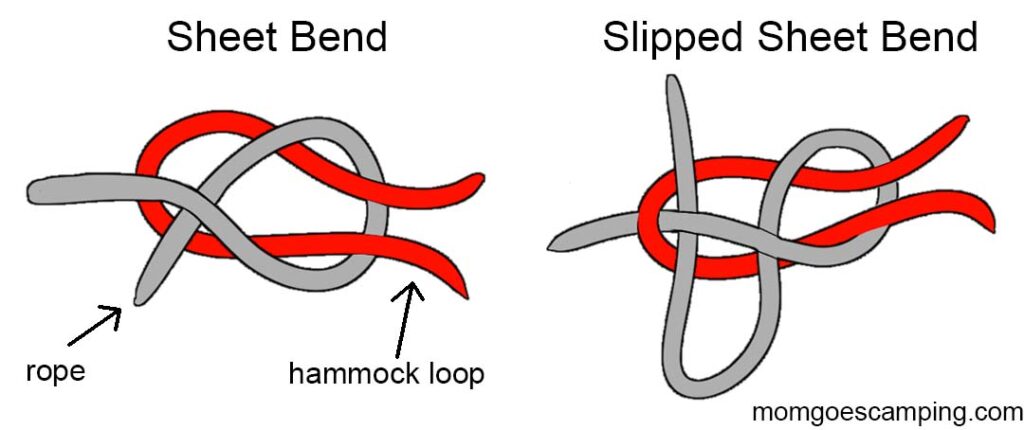
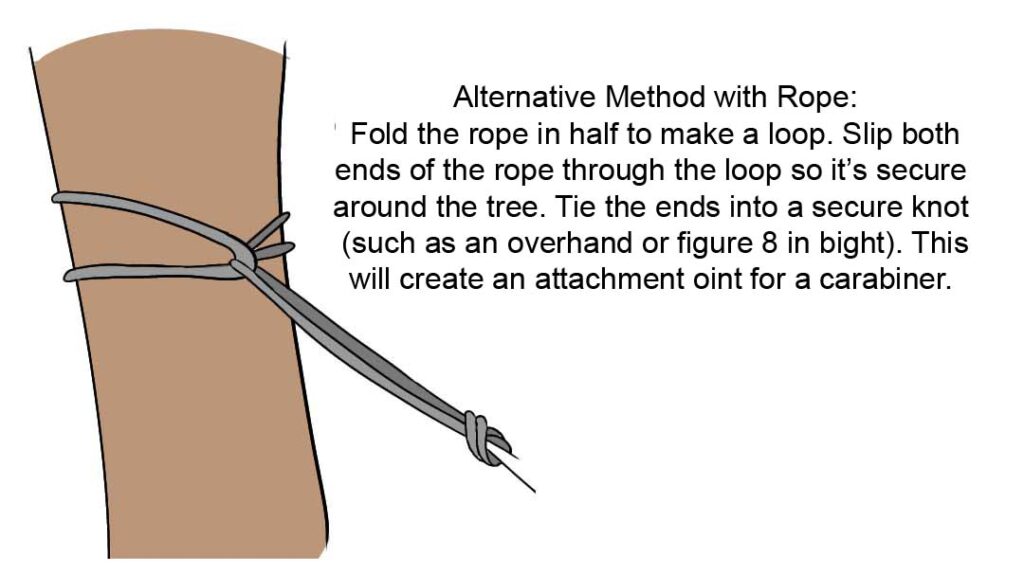

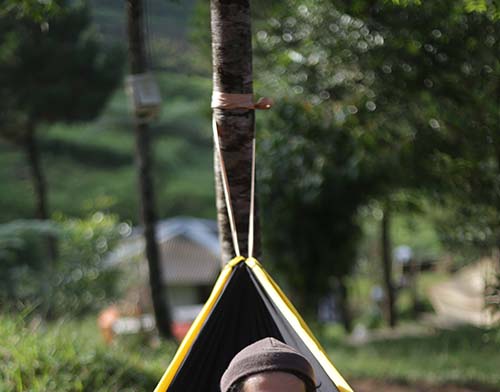
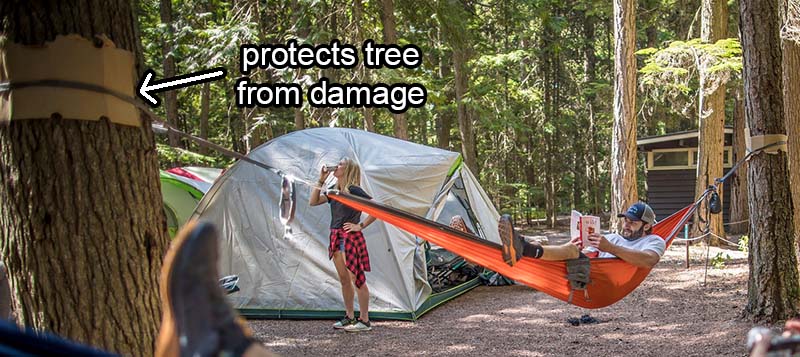










Post your comments